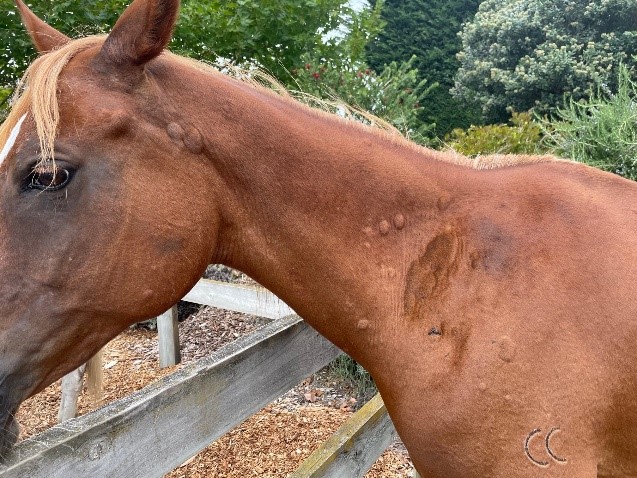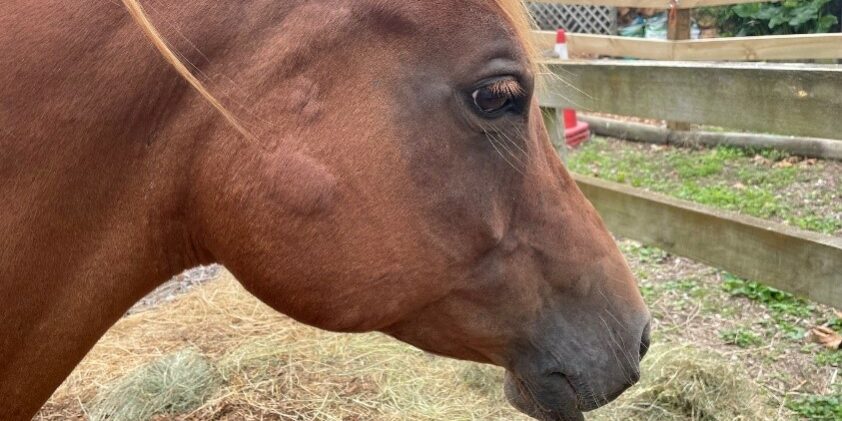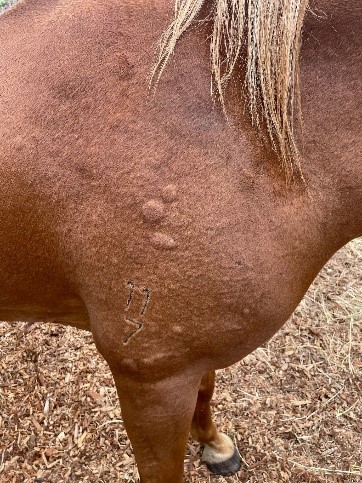Dave Kruger, Vet Services Napier
We see beestings in horses and dogs quite frequently. Like humans some animals appear to be more sensitive to the effects of bee sting toxin than others.
Our 15 year old Anglo-Arab Rushi recently suffered a severe reaction to a bee sting. We were about a kilometre from the end of our ride through a paddock filled with flowering clover and had just been discussing the number of foraging bees when Rushi managed to get stung on the lip whilst grabbing a mouthful of clover.
Within minutes he developed swelling of the lip – the site of the sting was clearly evident – followed by formation of wheals on his face and neck. This allergic skin reaction is known as urticaria and is an indication of a systemic allergic reaction.
By now we were home and he was treated with intravenous dexamethasone (cortisone). Typically this is a rapidly effective therapy. Cold water hosing of affected the skin areas was also commenced.
Despite treatment, the skin reaction had progressed to his neck and rump within half an hour, and shortly after his tongue and neck were visibly swollen and his breathing was becoming laboured. At this point intravenous antihistamine was administered.

Fortunately this had the desired effect and the reaction began to resolve.
If you suspect a bee sting in your horse, monitor for the above clinical signs. If a skin reaction or changes in breathing become evident get one of us out to treat as soon as possible. Whilst severe reactions such as Rushi’s are rare they can be very serious or fatal is not controlled quickly.
If you are a distance away from veterinary care, human antihistamines such as Cetirizine (Zytec) can be used. This is obviously an off-label use of the medication but is thought to be safe to use in horses. The recommended dose is ten tablets for an average size horse (500kg).





